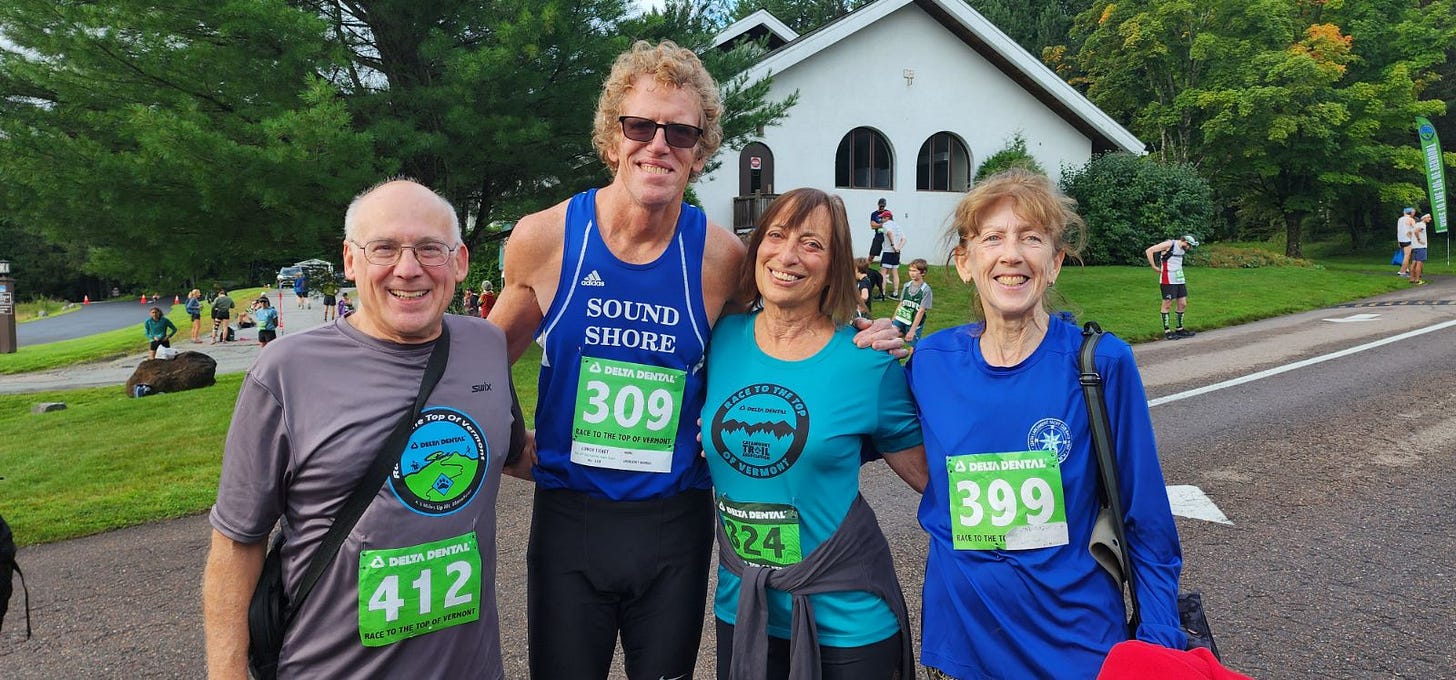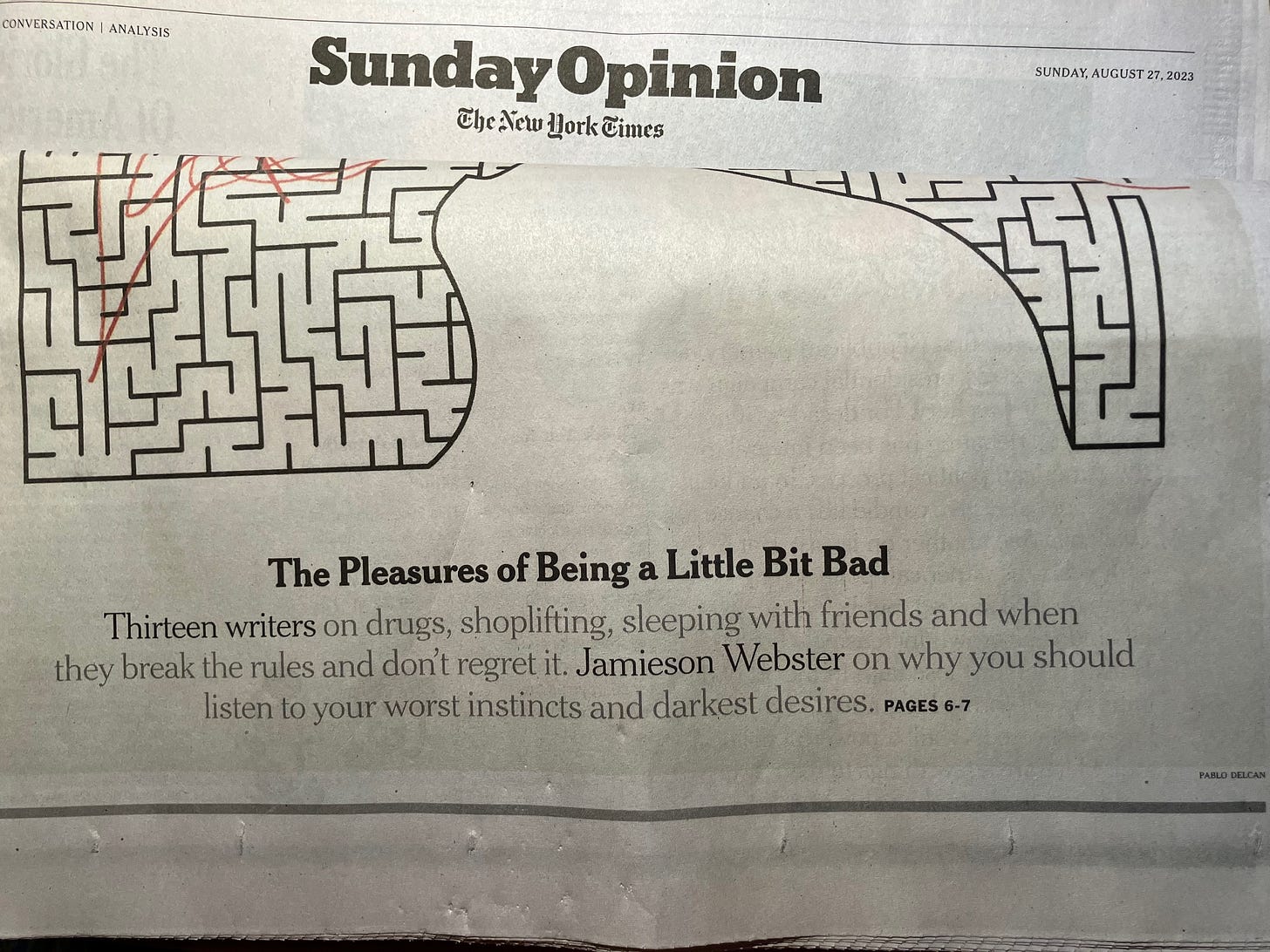Me (second from right) before climbing Mt. Mansfield with husband (to my left)) and friends
First it was the dog park, where I sometimes hang out in the morning after running with my pooch. Another dog owner, seeing me in street clothes and not my grungy running attire, said, “No running today?”
“Not today,” I explained. “I climbed up Mt. Mansfield yesterday and my legs are still achy.”
I didn’t know this person, except as the owner of a golden retriever who fetches balls endlessly, but I felt happy that he knew my usual habits.
Then it was the post office. When I entered the building, the postmistress gave me a big smile and a warm hello. It was such an effusive greeting (just for me?) that I turned around to see if it was aimed at somebody else. No, I was the only one in the lobby. I smiled back and said hello with real delight. I felt seen; I felt known. I left with my stamps and a glow.
Next it was the bank, where the day before I’d opened an account and now needed further documentation. When I walked in, the bank officer said “Hello Miss Hiller” and gave me a beautiful smile. I’d noticed her great teeth the previous day; it was a treat to see them again. We had met only the day before, but now we were no longer strangers; we were acquaintances.
When I consider living elsewhere, I don’t worry about losing my friends, I worry about losing these casual relationships that make me feel part of a community. The guy at the deli counter; the owner of the cool boutique; the cashiers at Trader Joe’s: these so-called “weak connections.”
I wish the term were otherwise! There are few positive associations with the word “weak,” yet these connections are more important than one might think. They help to anchor and embed a person.
A new study by Hanne Collins of the Harvard Business School says a mix of weak and strong social ties, known as relational diversity (I love a new term) leads to greater life satisfaction.
In a recent NPR interview, Collins said, “We basically find that the more relationally diverse people's social portfolios were, so the more relationship categories they talk to in a day, and the more their conversations are across those categories, the happier they are. And we find this in a large sample across many countries. And the idea here is essentially that we have a lot of different relationships in our lives. And there's a lot of research showing that humans are inherently social beings. And social connection is a key factor in our health. And . . . close ties are important, but weak ties are also important.”
She was asked, “If your partner is your best friend and your only friend, your well-being may not be that good, right?” Collins agreed and suggested “Maybe next time you’re at the grocery store, strike up a conversation with the cashier.”
People are finally coming around to this idea. Various articles and podcasts have recently recommended talking to strangers as a daily practice. Certain benches at the park near me are newly designated as places to sit if you welcome a chat.
Yet it’s been a full fifty years since Mark Granovetter’s groundbreaking paper, “The Strength of Weak Ties,” was published. It is now recognized as one of the most influential sociology papers ever written.
This paper introduced the importance of weak ties, or people we interact with on a regular basis who aren't friends or family. Realizing how much these second- or third-tier contacts matter in our lives changed the way we look at ourselves and our social surroundings.
Weak ties provide the social fabric of our society, linking us to each other in small but happiness-boosting ways. During the pandemic, we lost those weak ties, as we no longer interacted with shopkeepers, bartenders, hair stylists. The loss of these weak connections made us feel adrift, even as we had regular zoom talks with our strong connections. It turns out weak ties lead to strong social cohesion.
So when a neighbor waves hello and we chat about leaf blowers or garbage collection, the talk may be trivial, but not our sense of connection.
Postscript. Last week I wrote a Substack post: “Transgression: The Secret Pleasure.” It came out on Tuesday, and I mentioned shoplifting and cross-dressing among other things.
Five days later, in its Sunday Opinion section, the New York Times published “The Pleasures of Being a Little Bit Bad.” Subhead: “Thirteen writers on drugs, shoplifting, sleeping with friends and when they break the rules and don’t regret it.” I was delighted to read the piece.
One common pleasure, whether you’re racing up a mountain or publishing an essay, is getting there first!




Hugs...(o:
t
I love this article. I have never heard this term before. Thank you for sharing it. I am going to share with our community.